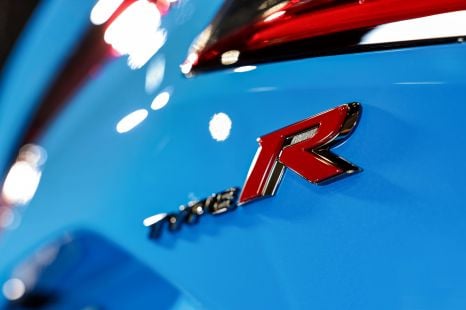

Damion Smy
Honda Prelude Type R ruled out... for now
8 Hours Ago
While EV sales in Australia are modest, they are increasing as a percentage rapidly. Can Hyundai match established players in the game when it comes to EVs?

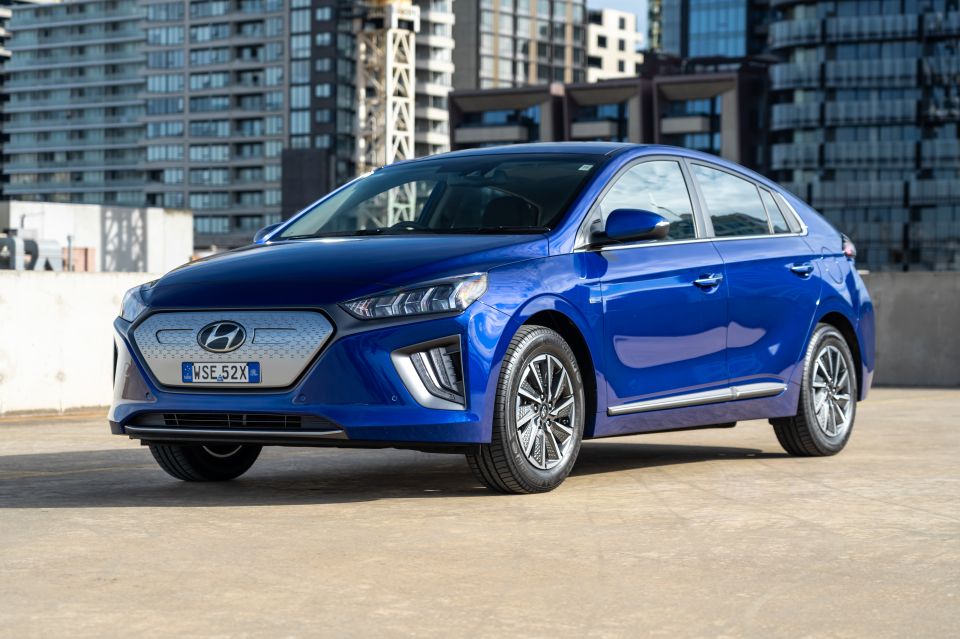

Founder
New from
$34,790
excl. on-roads

Founder
New from
$34,790
excl. on-roads


Founder
New from
$34,790
excl. on-roads

Founder
New from
$34,790
excl. on-roads
Quickly see how this car stacks up against its competition. Select any benchmark to see more details.
Where expert car reviews meet expert car buying – CarExpert gives you trusted advice, personalised service and real savings on your next new car.
As electric vehicles become more mainstream, some manufacturers are evolving their designs to position them as petrol-free versions of their existing cars.
Hyundai, on the other hand, has forged ahead with a curious design for the 2020 Hyundai Ioniq Electric.
Instead of blending in with traffic, the updated Hyundai Ioniq Electric stands out with a colour offset grille and eco-friendly wheels designed to increase aerodynamic efficiency.
But if you can get past the design, Hyundai has increased driving range, battery size, and the equipment list to make the Ioniq an even more compelling purchase choice.
Should the $4000 price increase deter buyers? We hit the road to find out.

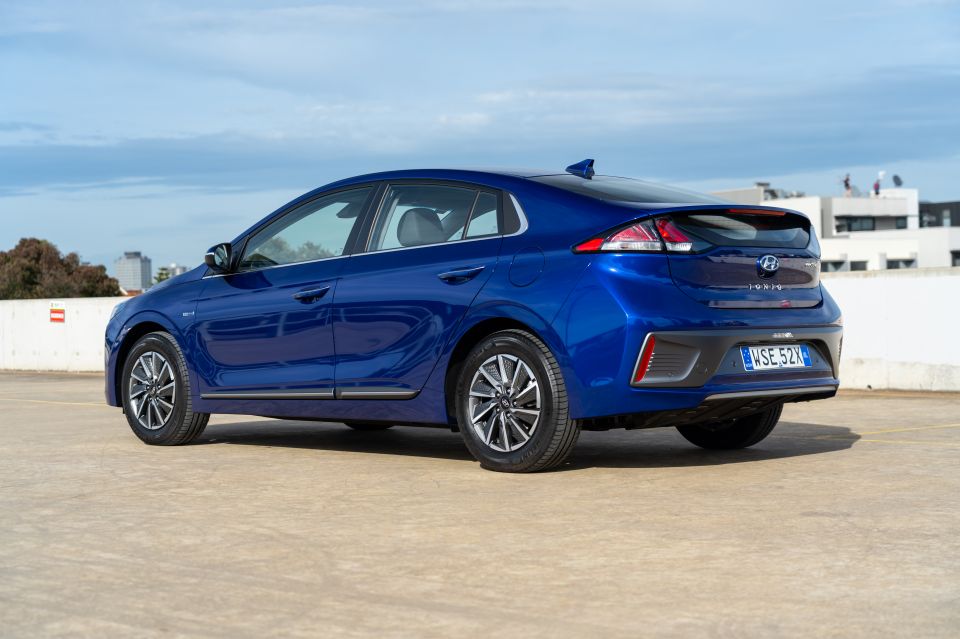
The entire Ioniq range kicks off with the Ioniq Hybrid Elite, which starts from $34,790 before on-road costs.
It then finishes at the top with the car we’re testing here, the Ioniq Electric Premium, which will set you back $52,490 plus on-roads.
It’s available in five colours, with all but the solid white setting you back an additional $495.
Pricing seem more expensive than it once was? That’s because it is. Hybrid and plug-in hybrid models have climbed by $800 and $1000 respectively, while electric variants have jumped almost 10 per cent by $4000.
That’s in part due to the extra batteries, more powerful electric motor output, greater charge rate capacity, and an increase in standard specification.

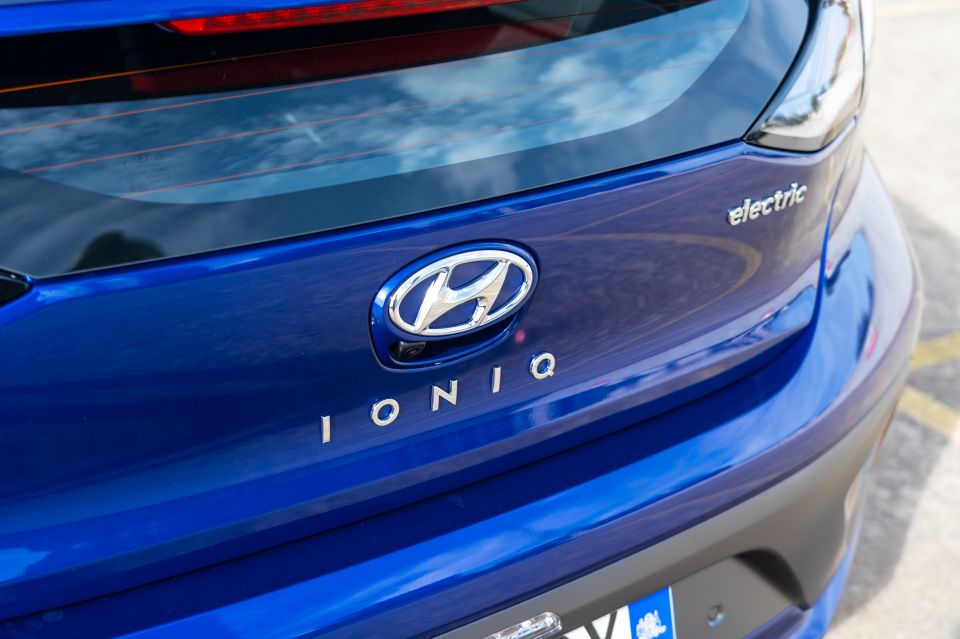

Buy your new car without the stress. It's fast, simple and completely free.

Great service from Travis and team, second time I have used this business would not hesitate to recommend them to anyone
Craig C.
Purchased a Ford Ranger in Sunshine Coast, QLD
CarExpert helped Craig save thousands on his Ford Ranger, now let us save you on your next new car.
Find a dealThe initial sting of the purchase price becomes easier to manage when you see the standard equipment list on the Ioniq Electric Premium model.
Standard gear outside includes 16-inch aero-style alloy wheels, front and rear parking sensors, a sunroof, satin chrome door frames, rain sensing wipers, automatic LED headlights and taillights, keyless entry and start, and AutoLink Premium.
Inside the cabin you’ll find leather seats with heating and ventilation for the front row, a 10.25-inch infotainment system with Apple CarPlay and Android Auto, DAB+ digital radio, an auto-dimming rear-view mirror, heated steering wheel, wireless phone charging, radar cruise control, a memory driver’s seat with electric adjustment, dual-zone climate control, an eight-speaker Infinity sound system, and sports alloy pedals.
AutoLink Premium is an LTE-driven wireless system allowing you to communicate with the car remotely. This system allows owners the ability to remotely check charge levels, start the vehicle’s climate control, send navigation destinations, check tyre pressures, remotely lock and unlock the car and check trip history.
There are a number of other functions available, but the key takeaway from the system is that it comes free of charge provided you service your car with a Hyundai dealer.
AutoLink Premium is easy to use and fairly quick, but you’ll find some functions lag a little. If you’re standing near the car and hit a button for one of the functions, it takes a few moments for it to happen, like the command is sent elsewhere, validated, sent to the car, and then sent back to the remote location before anything happens.
The entire Ioniq range comes with seven airbags and scored a five-star ANCAP safety rating.
Tested in 2018, the Ioniq scored 90 per cent for the adult occupant protection rating, 80 per cent for the child occupant protection rating, 70 per cent for vulnerable road user protection, and 70 per cent for safety assist systems.
Also standard across the range is low and high speed autonomous emergency braking (AEB) with pedestrian detection, rear cross-traffic alert, lane-keeping assist, and driver attention warning.
A big focus from Hyundai was making the interior look and feel premium, which means the Ioniq Electric finally lives up to its price tag.
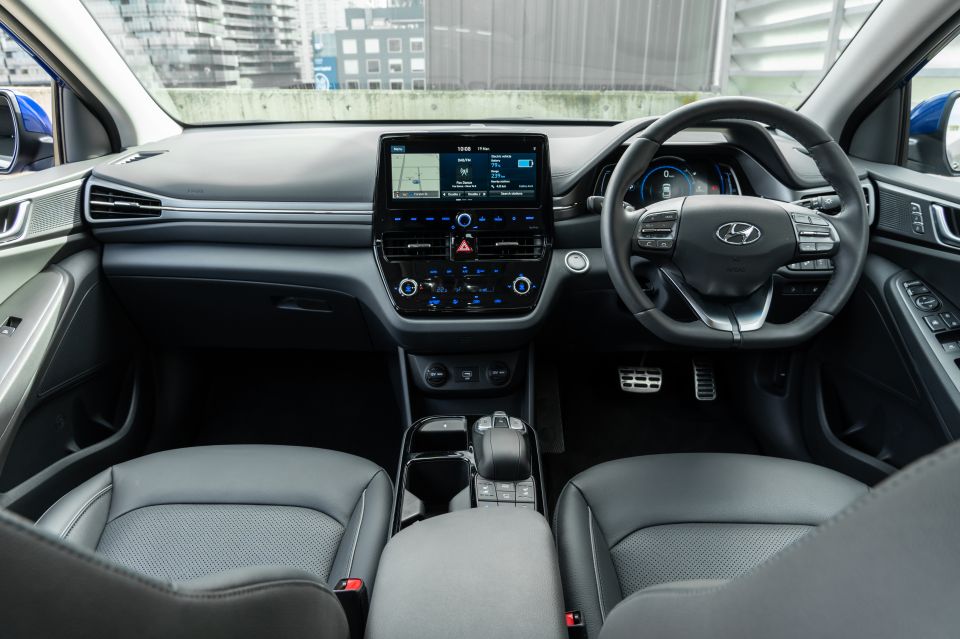
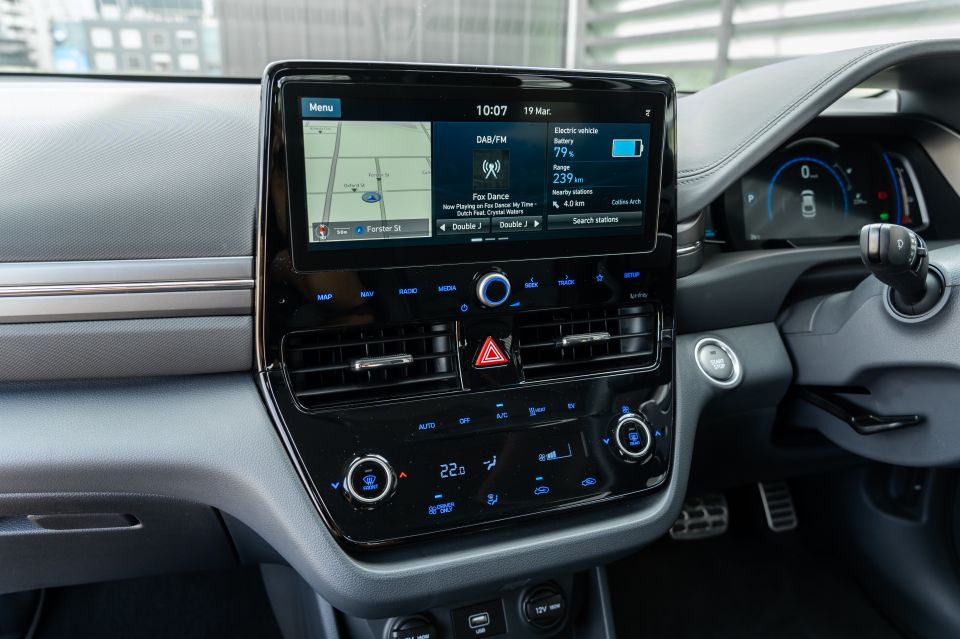
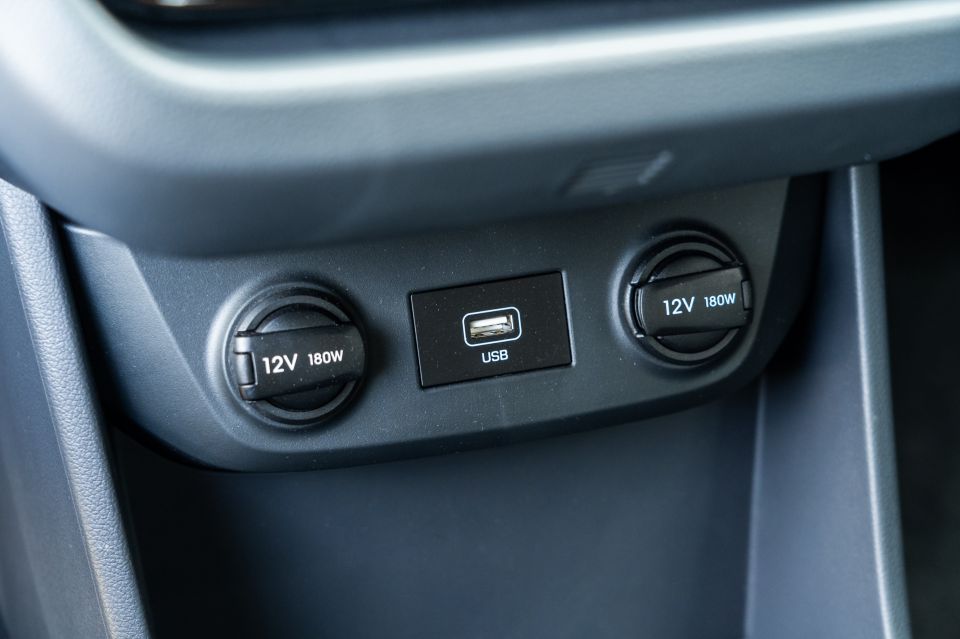
The addition of ‘soft touch’ dashboard material and the integration of a much larger 10.25-inch infotainment system make the interior feel like it’s from a more expensive car.
Instead of a conventional gear selector, the Ioniq Electric uses a button cluster to the left of the driver’s knee. It’s easy to use, but features a spot to rest your palm while selecting gears. It’s an odd thing to include given you only select gears a couple of times while driving.
The space could be better used for additional storage, or shifting the button cluster beneath it forwards.
Check out that infotainment system. The new 10.25-inch unit is high-resolution and comes fitted with widescreen Apple CarPlay and Android Auto, so it looks a million bucks when you plug in a smartphone.
The entire infotainment system is easy to use, with a sub menu dedicated to the vehicle’s EV information. There you’ll find battery charge capacity, nearby charging locations, and a look at your driving history.
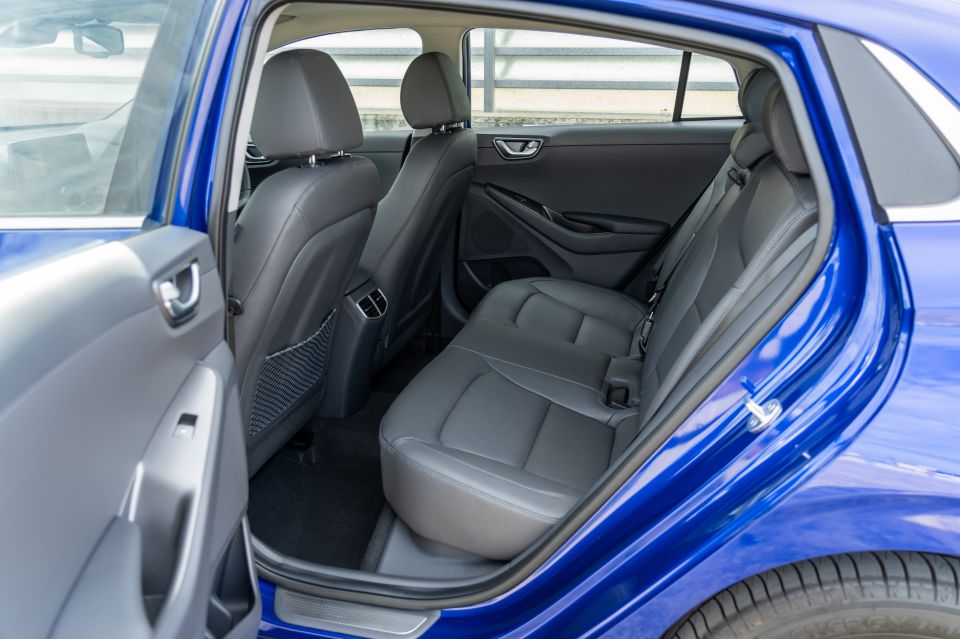
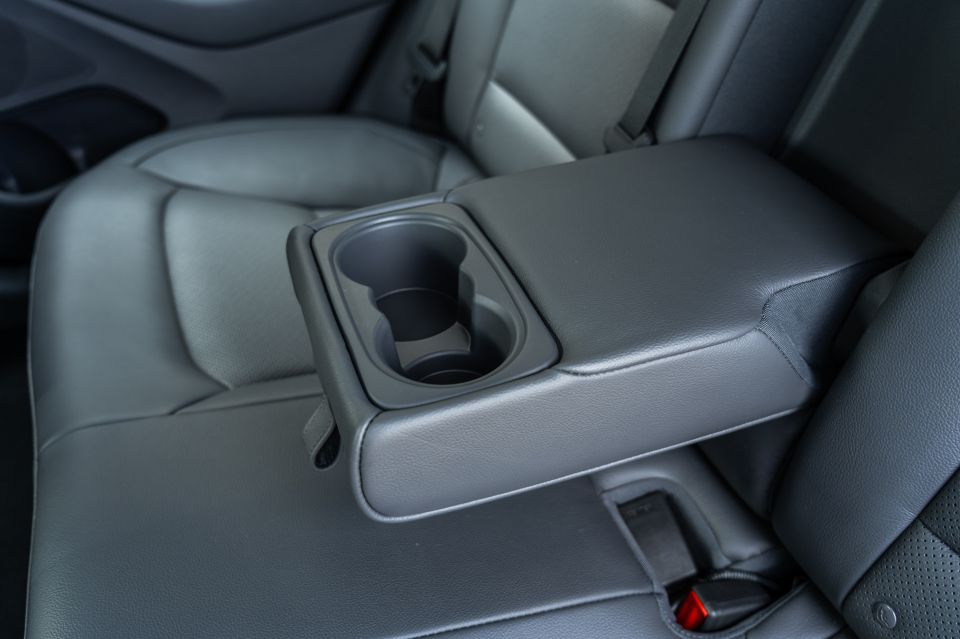
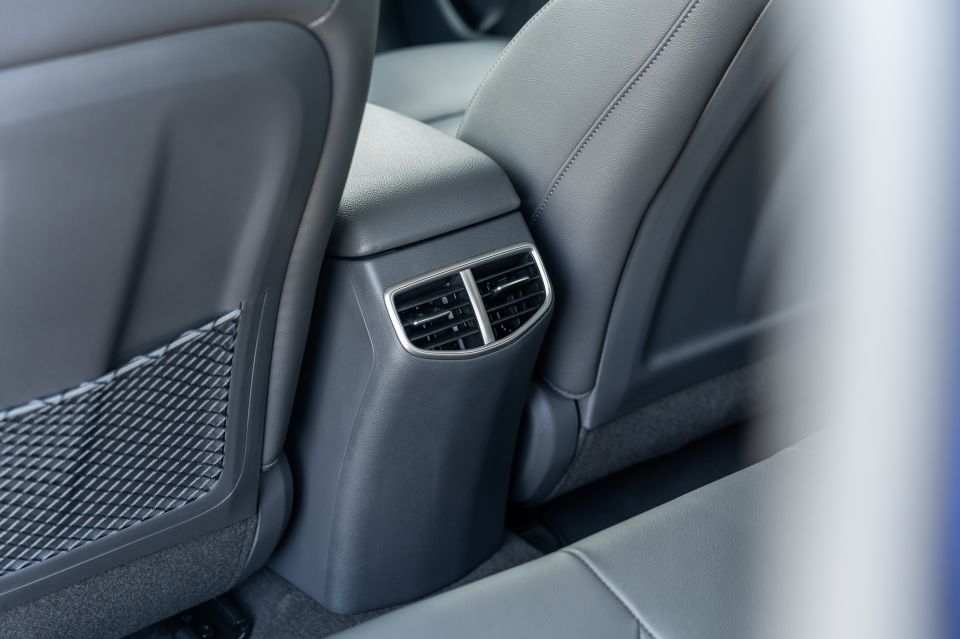
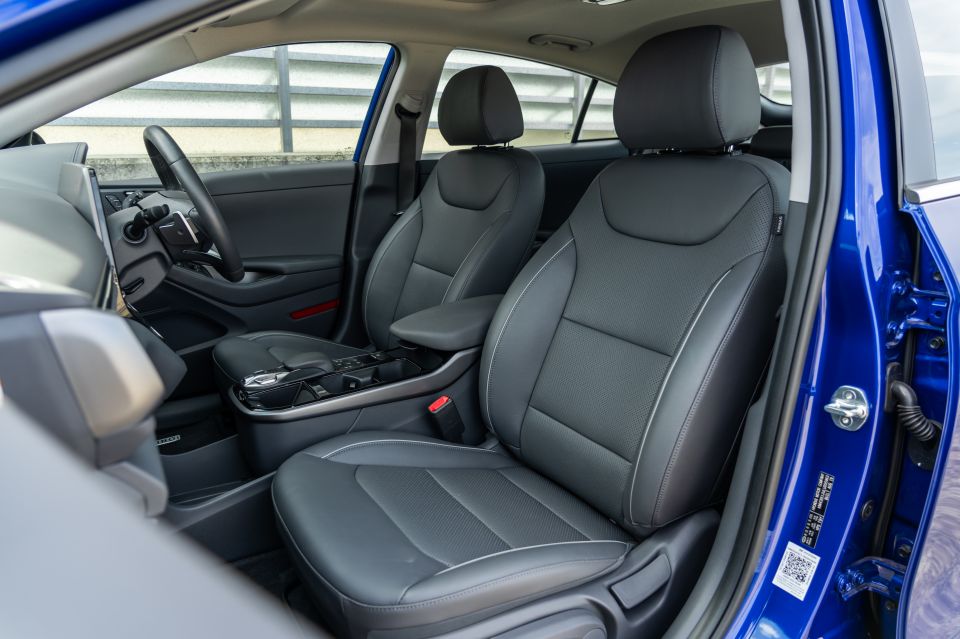
If you’re a music fan, you’ll love the eight-speaker Infinity sound system. It has plenty of punch and sounds great when streaming music from your smartphone or the inbuilt radio (FM/AM/DAB+).
Despite the steering wheel featuring a voice control button, it doesn’t actually do anything unless your smartphone is connected through the mirroring function. That means if you’re only connected via Bluetooth, there’s no voice recognition system and no ability to pass commands to your phone without it being physically connected with a cable.
Capacitive touch buttons are now fitted beneath the infotainment screen. They light up and only require a soft touch to activate.
In addition to Qi wireless phone charging, users can connect and charge their phones using two USB ports – one at the front, and one in the centre console. The wireless phone charger is located in a handy position and fits big phones.
Ahead of the driver is an LCD display that can be customised and includes speed, cruise control, a trip computer and range details. Located on the left and right of that display is a power meter and to the right is a battery capacity scale.
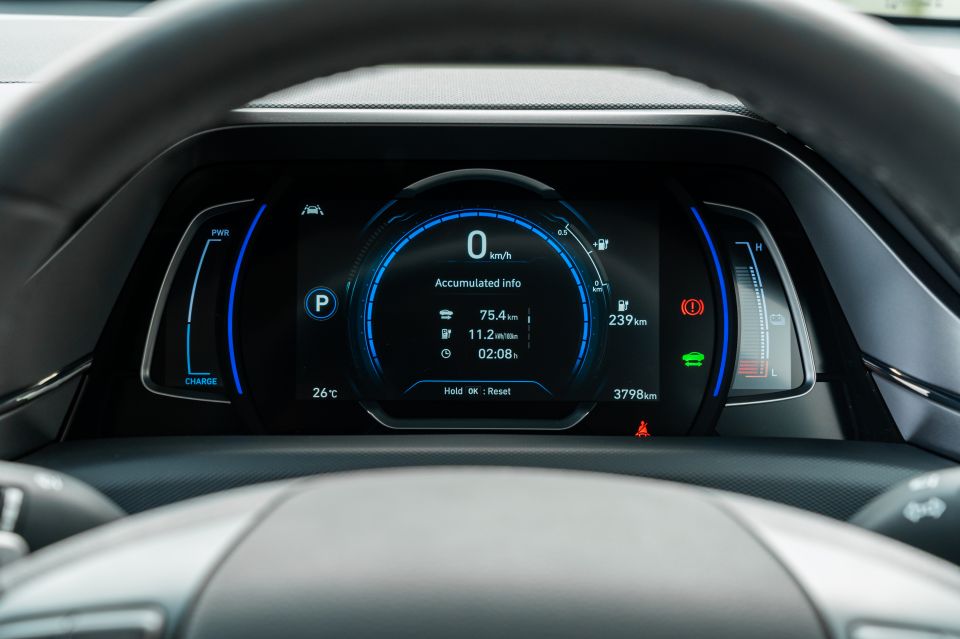
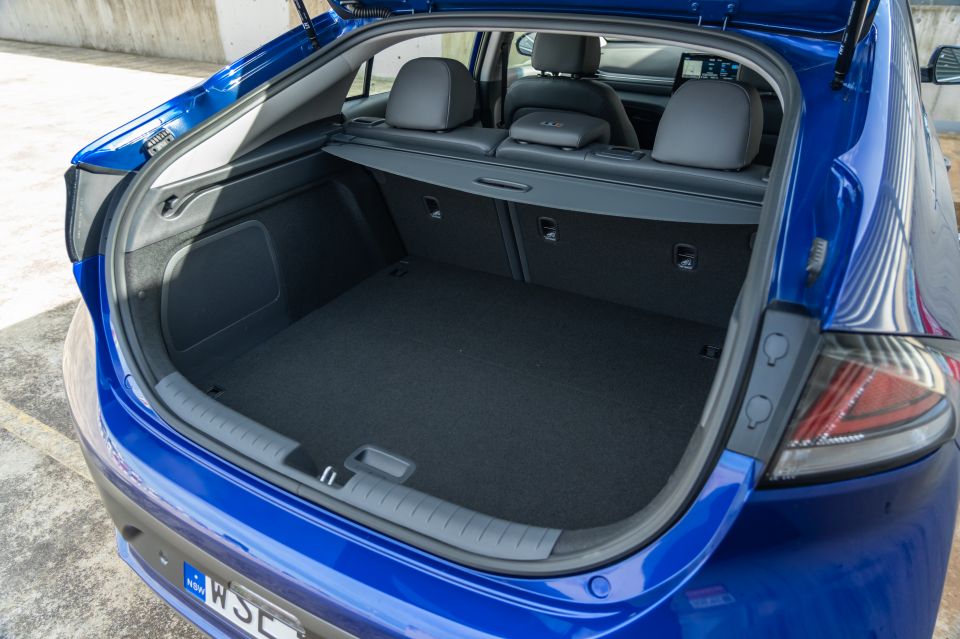
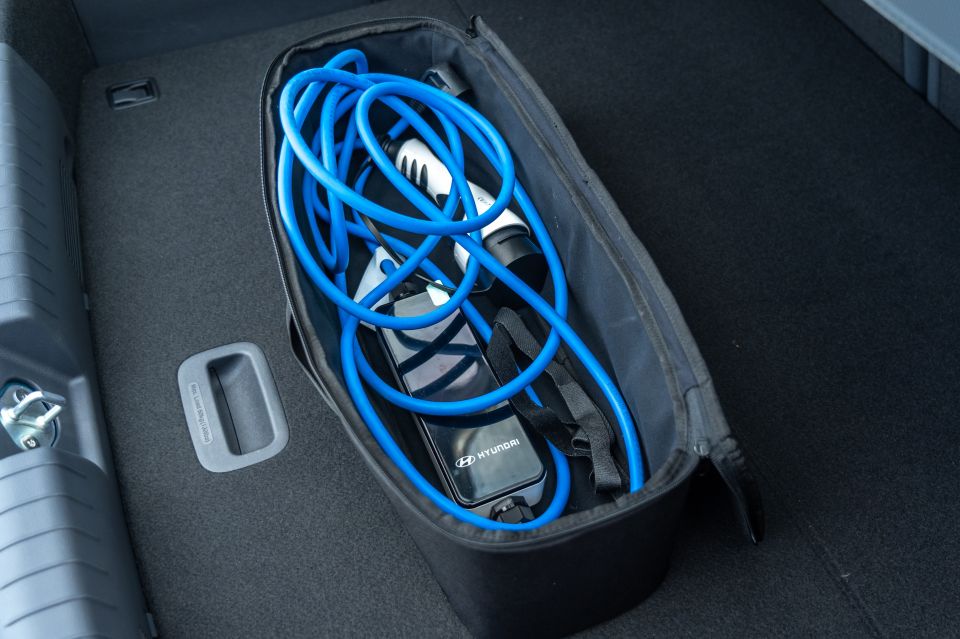
We’ll go into this in a bit more detail shortly, but the range accuracy and efficiency of the Ioniq is to be applauded. This is one of the best EVs on the market in terms of how much range you will get out of every kWh of energy.
The second row isn’t the most spacious spot in the world, but if you’re sat behind a tall driver you will still have sufficient knee room and adequate head room. I’m around 185cm tall and sit with the driver’s seat well back, and found my knees were just short of the driver’s seat.
There’s an arm rest back there too, with two cup holders and rear air vents. But you won’t find any USB connectivity for your second row passengers. If you’re planning on carrying kids in the second row, there are two ISOFIX points on the outboard seats, along with three tether points attached to the back of the seats.
Cargo capacity comes in at 357 litres with the second row in place. That space increases to an impressive 1417 litres when the second row is folded.
Funnily enough, where a lot of EVs use the bonnet as an opportunity to cram in more storage space, Hyundai occupies the entire front-end space with the electric drivetrain.
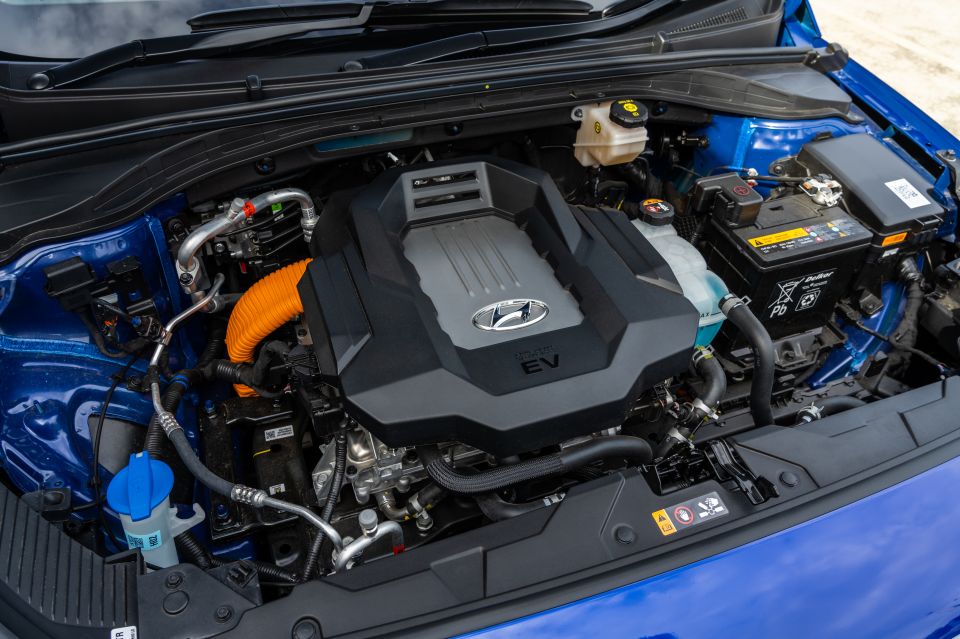

The Ioniq Electric now uses a motor producing 100kW of power and 295Nm of torque. The car comes with a permanent magnet synchronous motor feeding power from a bank of LG Chem Lithium-Ion batteries that are 38.3kWh in capacity.
It’s fitted with a single-phase on-board AC charger that will pump up to 7.2kW into the battery, while an on-board DC charger will feed up to 100kW of power into the battery system.
This facilitates for a charge time of 23 minutes on a 100kW DC charger, 46 minutes on a 50kW DC charger, 5.3 hours on a 7.2kW home AC charger and 18.2 hours on a 2.1kW home AC charger.
Tested against the stricter WLTP cycle, the Ioniq Electric will travel 311km. Against the NEDC cycle, that number is 373km. Energy efficiency comes in at an impressive 15.5kWh/100km.
One of the first things you’ll notice when setting off in the Ioniq Electric is the low-speed pedestrian warning sound. It’s a futuristic EV hum as the car rolls along, joined by a reversing chime when you’re heading backwards.
Strangely, even with this feature active we found some pedestrians glued to their phones still didn’t realise there was a car coming when cruising through an underground car park.
Throttle response from the Ioniq Electric is excellent. It’s a common trait amongst EVs, but Hyundai has done a good job rounding out torque delivery so it feels natural. It’s almost as if they have limited torque delivery to ensure smooth acceleration.
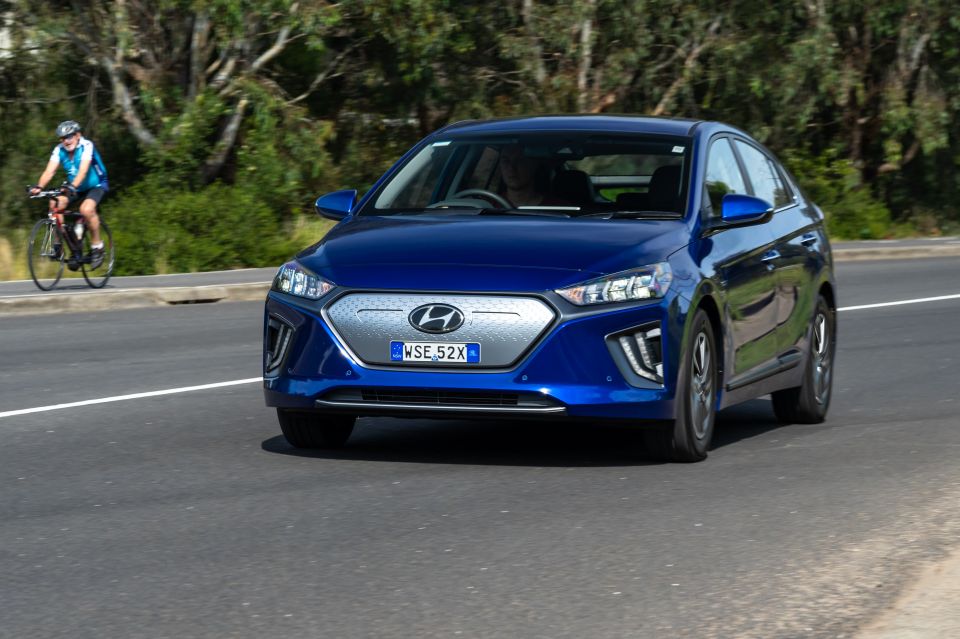
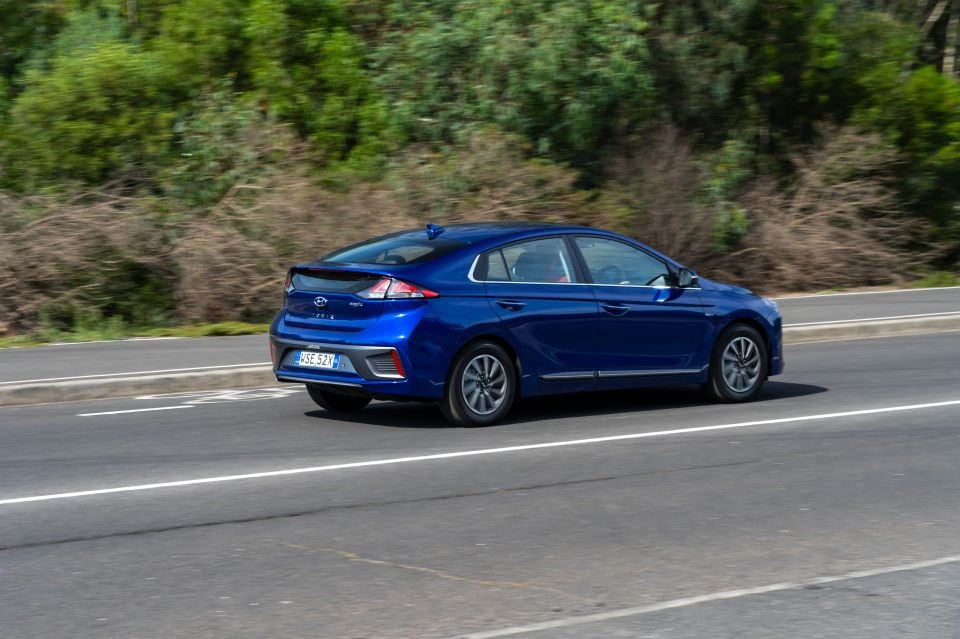
The inverse is true when slowing down. Attached to the steering wheel are a set of paddle shifters that control the level of power regeneration. This feature allows the vehicle to use its momentum to generate electricity to plumb back into the battery – it means extended mechanical brake life.
You’re able to select three different regeneration levels and can even come to a complete stop if you pull and hold the ‘down’ paddle on the left of the steering wheel. For the most part it works great, but we weren’t entirely thrilled with brake pedal feel. It’s not as linear or as communicative as the pedal setup in a Tesla or Mercedes-Benz EQC.
Drivers can select from four driving modes – Eco+, Eco, Comfort or Sport. Each varies the level of torque delivery with each throttle application, while Eco+ and Eco vary the intensity of the air conditioning and other energy-sapping systems.
There’s actually a cool feature that allows the driver to select a ‘Driver Only’ mode for the air conditioner, and shuts down other cooling zones in the car. It’s a great idea given cars are often driven solo, making cooling the whole cabin redundant.
Hit the sport button and the Ioniq transforms into a bit of a race cars. It’s limited by ultra eco-friendly, low rolling-resistance Michelin Energy Saver tyres, but Sport dials up the intensity and allows the Ioniq to accelerate more like a sporty EV than an energy-saving one.
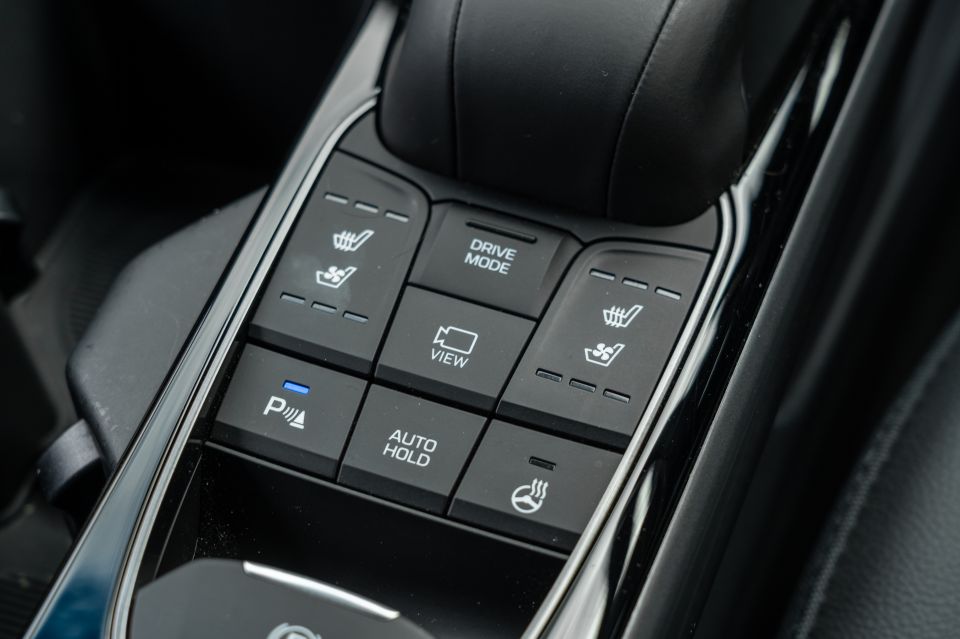
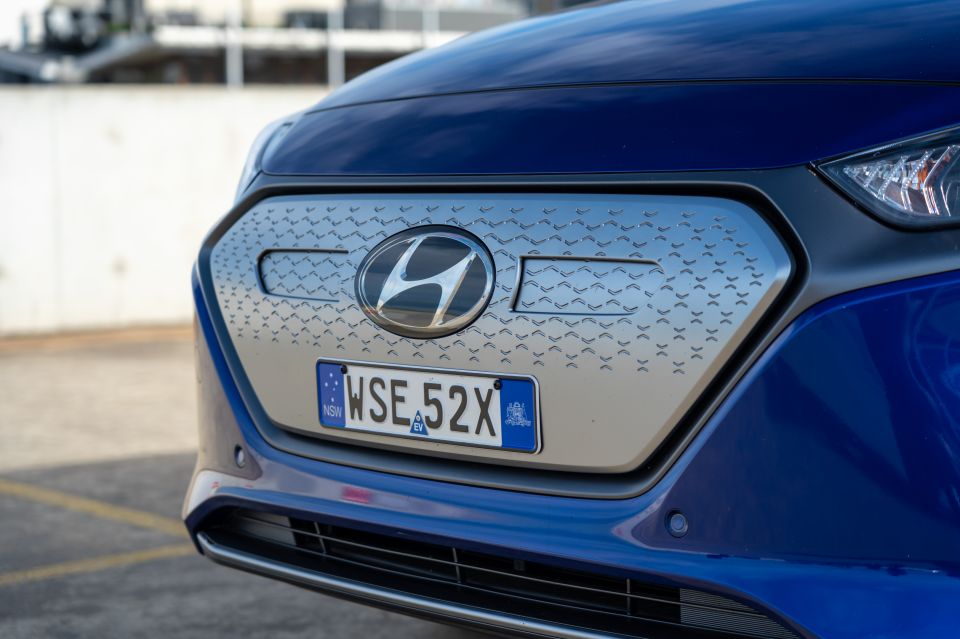
Like most other Hyundai products sold in Australia, the Ioniq Electric uses an Australian-specific suspension tune. Hyundai has the opportunity to get hold of products before they land in Australia and develop a suspension tune that caters for our unique road conditions.
A lot of people ask what that means – are our roads particularly bad? Not really, but the breadth of roads and conditions an Australian driver could endure in a single day is unique. Take country roads with pot holes and gravel banks; the car needs to be able to deal with these, without sacrificing ability on windy mountain roads or city streets with cobblestones and speed humps.
As a result, our suspension tune is often a little sportier than the default Korean tune, which is skewed more towards comfort.
That means the Ioniq Electric drives beautifully in and around the city, and on country roads. Coming in at just under 1600kg it’s not an overly heavy car, but copes well with its weight. The fuel efficiency is also partly thanks to its 0.24 coefficient of drag.
Shutters within the front grille allow the vehicle to use ambient air for battery cooling, which can then be closed to achieve that high coefficient of drag.
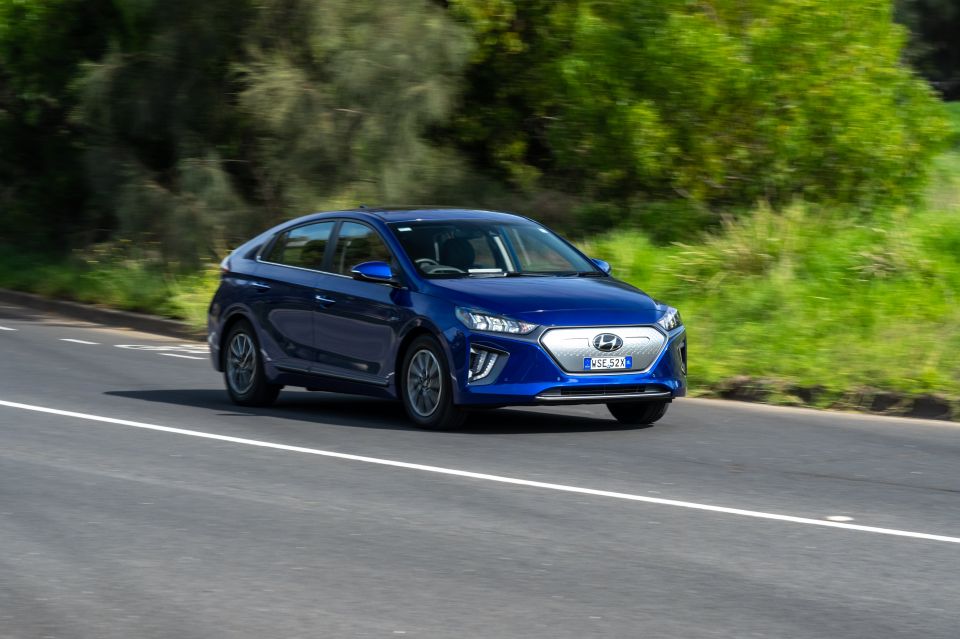
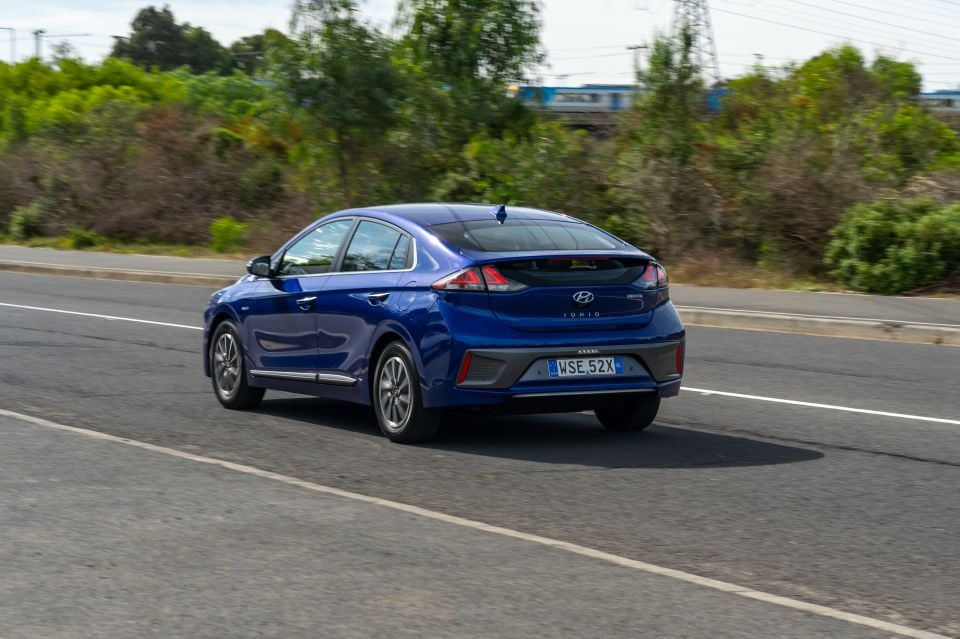
There’s a lot to love about the way the Ioniq drives. It’s not left longing for torque, but equally it doesn’t overcome its front treads with torque if you stand on the throttle in sport mode. It can get a little skittish in the wet if you tramp on the throttle, but the traction control system reigns in the front wheels when things get a little too anti-eco.
Being an electric car, servicing for the Ioniq Electric is pretty minimal. Service intervals are every 12 months or 15,000km and are priced at $180 each.
The Ioniq Electric comes standard with a five-year, unlimited-kilometre warranty. Over a five year period, servicing comes in at $900.
At an average energy rate of 30c per kWh, the Ioniq Electric will cost you around $11.60 to charge per 311km of driving.
EVs have come a long way, both in terms of design, functionality and practicality.

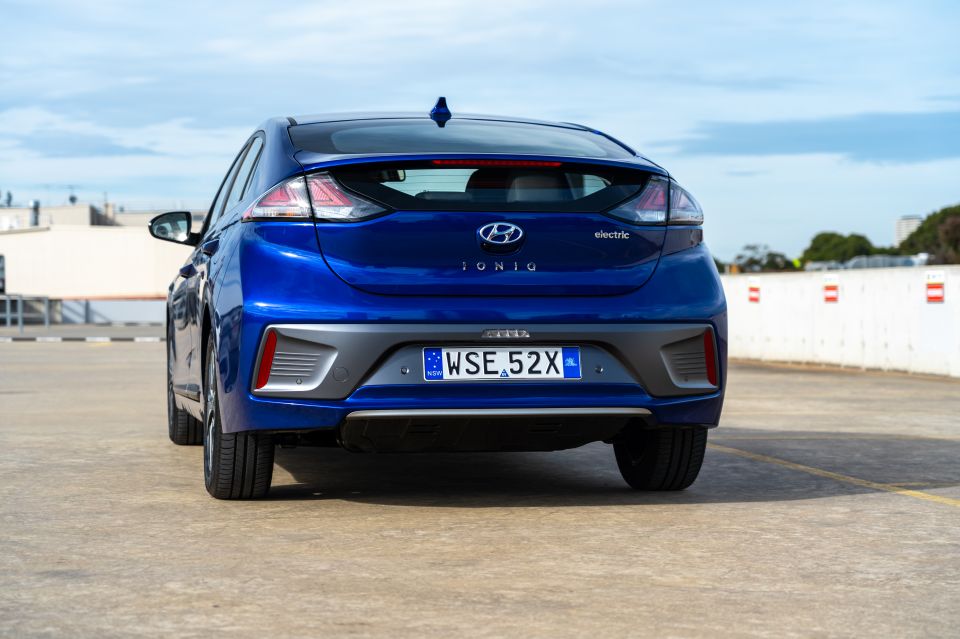


The Ioniq Electric brings to the forefront the latest in EV battery technology and puts Hyundai at the front of the pack in terms of energy diversity options. Hyundai now offers petrol, diesel, hybrid, plug-in hybrid, electric and hydrogen vehicle options, with their electric vehicles consistently delivering accurate energy consumption and high efficiency.
The design of the Ioniq may not appeal to some, but for those there’s also the Hyundai Kona Electric to look at, which will set you back an additional $7500, but comes with a bigger battery and more driving range.
If you’re not fussed by the design, this EV presents a far more compelling purchase proposition than the similarly priced Nissan Leaf. It’s incredibly efficient and comes with similar remote connectivity options to more expensive German vehicles.
Where expert car reviews meet expert car buying – CarExpert gives you trusted advice, personalised service and real savings on your next new car.
Paul Maric is a CarExpert co-founder and YouTube host, combining engineering expertise with two decades in automotive journalism.


Damion Smy
8 Hours Ago


Damion Smy
10 Hours Ago


Damion Smy
11 Hours Ago


Matt Robinson
14 Hours Ago


Damion Smy
14 Hours Ago


Damion Smy
1 Day Ago